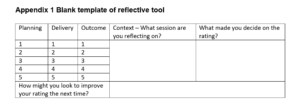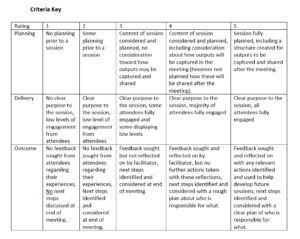By Paul Astles
So what is CPD?
CPD stands for Continuous Personal Development. Often, CPD can be perceived as something that happens through mandatory training sessions rather than being an active process that you can be involved with daily. Al-Asmari (2016) discovered that some staff viewed CPD as a challenge to overcome rather than a supportive process.
The logic of using reflection as a tool for CPD is not new (Yearley, 2003). One important consideration (explored by Yearley) is that reflection should be a guided process to be meaningful in relation to CPD.
It would be naive to assume that simply introducing reflection to your toolkit will have a positive impact on your practice. The context of reflection is important for the participants to experience a positive outcome (Boud, 1999).
Mann, Gordon, and Macleod (2009) completed a systematic review of literature relating to reflection and support the notion that reflection can have a positive impact on outcomes. However, it is noted that those who are being supported to engage in it may see the process of reflection itself in a negative light. Mann et al. reported finding evidence of this from more than one source in their analysis. Concerns included the timing of reflection being too far away from the event to be meaningful for the participants. In addition to this, another concern noted was in relation to the time required to complete the reflections.
It’s important to be mindful of these findings and consider how reflection can be completed in a meaningful way without feeling onerous and time consuming.
The purpose of reflection
The modern educator must keep up with a dynamic workplace and reflection plays a key role in maintaining a critical view (Pedro, 2006). Raines and Shadiow (1995) provide an important definition by which to consider what meaningful reflection is for an educator, ensuring that reflection is not a superficial exploration of ‘one’s successes’ (p271) is vital. Lyons (1998) considers the role of reflection within education through different lenses.
One area I’d like to draw attention to is the assertion that engaging with reflection helps to bring the information (that is reflected on) to the forefront of the participant’s mind. Scanlan, Care, and Udod (2002) support this, as they concluded that educators could gain a different perspective on their practice by looking at what is working well and what needs to be improved.
Reflecting on practice, why bother?
Integral to my own development with any skill is considering what has worked well and what has not worked well, then working out what to do with those thoughts to make my performance better. This perspective has been shaped, in part, by my background in sport psychology and consolidated within my teacher training. Reflection is a tool I use to evaluate and actively improve whatever it is that I am doing. I apply this to my work in the OU by attempting to continually improve my approach to delivering learning design sessions.
My own approach to reflecting on sessions I deliver
I’ve been reflecting on and developing my approach to learning design sessions with module teams since joining the OU in January 2021. I’ve sought feedback in several ways and used that information to adapt and develop my approach to the sessions to ensure that they are as good as they can be for module teams. I wanted to be able to triangulate the experience that teams had in a session so that I could have a better chance at improving that experience as required. I adopted the approach of asking co-facilitators to reflect on their experience of sessions I ran alongside seeking feedback from attendees. Then finally combining that information with my own personal reflection, I was able to build a useful picture from which to consider the delivery of the sessions I ran.
Using this method has positively impacted my approach in three key areas 1) planning, 2) delivery and 3) sharing outputs after a session is completed. It led to me developing my own reflective tool (see appendix 1 below) to help me quantify how well I was meeting a self-imposed level of quality in relation to those three key areas of the session experience outlined above. I actively and regularly test my readiness for session delivery based on how well prepared I am to meet this success criteria through reflection. This cyclical process has helped me to meet the needs of the module teams I work with more effectively.

Appendix 1 Blank template of reflective tool

References
Al Asmari, A. R (2016) Continuous Professional Development of English Language Teachers: Perception and Practices, Advances in Language and Literacy Studies, 7, 3, 117 – 124
Boud, D (1999) Avoiding the traps: seeking good practice in the use of self-assessment and reflection in professional courses, Social Work Education, 18:2, 121-132
Lyons, N (1998) Reflection in Teaching: Can It Be Developmental? A Portfolio Perspective, Teacher Education Quarterly, 25, 1, 115 – 127.
Mann, K. Gordon, J. and Macleod, A. (2009) Reflection and reflective practice in health professions education: a systematic review, Advances in Health Sciences Education, 14, 595–621.
Pedro, J (2006) Taking reflection into the real world of teaching, Kappa delta pi record, 129 – 132
Raines, P., and Shadiow, L (1995) Reflection and Teaching: The Challenge of Thinking beyond the Doing, The Clearing House: A Journal of Educational Strategies, Issues, and Ideas, 68, 5, 271 – 274
Scanlan, J.M., Care, W.D., and Udod, S (2002) Unravelling the unknowns of reflection in classroom teaching, 38, 2, 136 – 143
Yearley, C (2003) Guided reflection as a tool for CPD, British Journal of Midwifery, 11, 4

